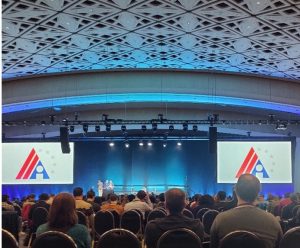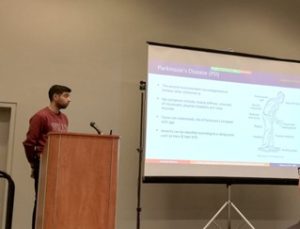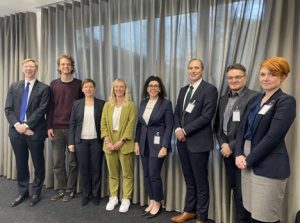This blog post is written by AI CDT student, Rachael Laidlaw
Last month, I took the exciting opportunity to attend AI UK 2023, a large-scale event organised by The Alan Turing Institute. It was my first conference outside of Bristol, held in the heart of London at the Queen Elizabeth II Centre – right by Westminster Abbey and Big Ben – and it promised to offer a diverse programme of activities with a broad range of interactive content. As such, the sessions were packed with novel material delivered by leading international thinkers across multiple disciplines, resulting in an in-depth exploration of how data science and AI can be used to solve real-world challenges.
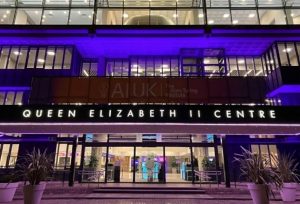
On the day
After a short walk to the venue from my hotel in Piccadilly Circus, I signed in and collected my demonstrator lanyard before heading up to the third floor of the building to meet my colleagues from the Jean Golding Institute. We would be spending the day manning a stall for the Local Air initiative in the environmental section of the Fleming room, engaging with attendees from both academia and industry about a pollution monitoring system designed to be mounted on e-scooters.
Highlights included:
- using ground coffee to simulate particulate matter in the air and generate a live response from the prototype which was shown on the screen behind us,
- contemplating alternative applications for the noise-pollution sound sensors (i.e., for use in the study of bats) with representatives from the UK Centre for Ecology and Hydrology, and
- considering media coverage possibilities for the project with a journalist from the Financial Times.

Into the afternoon
When lunchtime arrived, I began circling the floor to visit the other stalls. Whilst wandering, I encountered displays of lots of innovative concepts, some of my favourites being:
- a family of domestic social robot pets developed by the company Konpanion to alleviate loneliness,
- progress on the tool BoneFinder, created by academics at University of Manchester for use in clinical practice to segment skeletal structures,
- a cardiac digital twin produced at King’s College London,
- SketchX’s headset that gives you the ability to build your own metaverse from rough virtual drawings, and
- the Data Hazards project, complete with holographic stickers and hi-vis jackets worn by another University of Bristol team to really bring data-oriented risk assessments to life.
Of the above, BoneFinder stood out to me in particular, owing to the fact that my current specialist focus is ecological computer vision, and, thus, seeing the same sort of technique being used for a medical application piqued my interest.
The talks
During a quiet period at the stall, I jumped at the chance of sitting in on a very well-attended talk by Gary Marcus from NYU on the power of ChatGPT and the unknowns surrounding the future of such pieces of technology. This was especially thought-provoking and relevant to my ongoing work towards a potential CHI publication.
After re-energising with some delicious cookies in the break, I also made it to an insightful panel discussion on shaping public perceptions of artificial intelligence, featuring Tracey Brown (the director of Sense About Science), Tania Duarte (the co-founder and CEO of We and AI) and David Leslie (a specialist in ethics and responsible innovation). This reminded me of the importance of keeping stakeholders in mind during all stages of research.
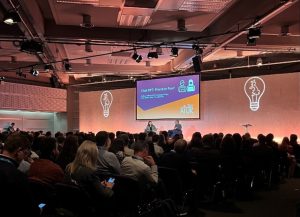
Closing moments
To round off the day, everyone came together to mingle and expand their networks over canapés and a significant amount of complimentary wine. We then gathered our belongings and headed out for dinner and to be tourists in London for the evening.
All in all, it was an incredibly fun and informative experience alongside a great team, and I’m already looking forward to future conferences!



